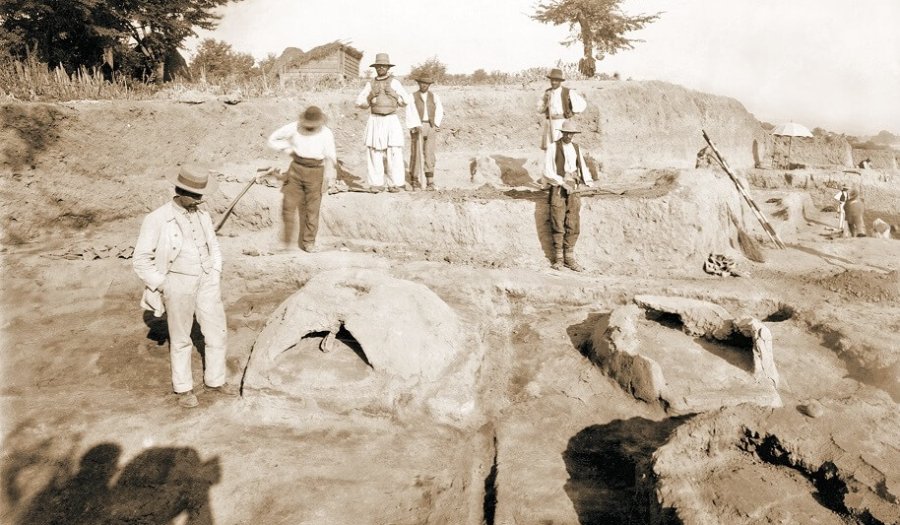
Vinca culture has flourished during the second half of the Neolithic Era (5,300 - 4,500 BC) and has become synonymous with the entire Neolithic epoch in Europe.
The development of trade and communications along the Danube river enabled Vinca culture to access new markets and raw materials from across the known world. Since it was at the crossroads of important strategic routes, Vinca become the largest marketplace in Europe of its time because of the exceptional value of its products and because of the rare raw materials brought in Vinca from different regions.
After the invention of copper ore and processing technology, the people of the Vinca culture become the founders of metallurgy in Europe. In the discovering the secret of how to convert matter, Vinca metalworkers laid the foundations for all future European civilizations.
The archaeologocal site Belo brdo in Vinca is situated on the right bank of Danube. Excavations began at the site in 1908 and continued till 1934. The research was conducted by professor miloje Vasic, the first formally trained archaeologist in Serbia.
In 1978 research activities in Vinca resumed and The Archaeological council was found in Vinca at this time. under the patronage of the Serbian Academy of Sciences and Arts. Research activities resumed once again in 1998 and have continued until today.
Vinca culture has flourished during the second half of the Neolithic Era (5,300 - 4,500 BC) and has become synonymous with the entire Neolithic epoch in Europe.
The development of trade and communications along the Danube river enabled Vinca culture to access new markets and raw materials from across the known world. Since it was at the crossroads of important strategic routes, Vinca become the largest marketplace in Europe of its time because of the exceptional value of its products and because of the rare raw materials brought in Vinca from different regions.
After the invention of copper ore and processing technology, the people of the Vinca culture become the founders of metallurgy in Europe. In the discovering the secret of how to convert matter, Vinca metalworkers laid the foundations for all future European civilizations.
The archaeologocal site Belo brdo in Vinca is situated on the right bank of Danube. Excavations began at the site in 1908 and continued till 1934. The research was conducted by professor miloje Vasic, the first formally trained archaeologist in Serbia.
In 1978 research activities in Vinca resumed and The Archaeological council was found in Vinca at this time. under the patronage of the Serbian Academy of Sciences and Arts. Research activities resumed once again in 1998 and have continued until today.





